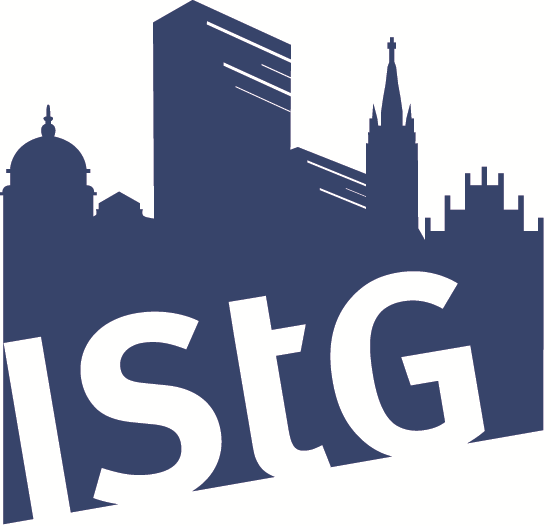Project history
Facing the destruction of large parts of the urban fabric in the Second World War, the International Commission for the History of Towns decided to issue guidelines for the preparation of historic towns atlases in 1955. The aim was to document the development of the European town from the Middle Ages to the present day by providing maps and other source material as a basis for research in all aspects of European urbanism. At a Commission meeting in Oxford in 1968 the ideas developed by Mary Doreen Lobel and IStG founder Heinz Stoob as to which kinds of maps should be included in the atlases were discussed. Since then, the basic programme remains the foundation of atlas work and has guided the publication of about 500 atlases all over Europe. In order to facilitate communication between the independent projects Anngret Simms (Dublin) and Ferdinand Opll (Wien) were appointed as first conveners of an Atlas Working Group in 1993. This had become especially necessary as after the political events of 1990 atlas projects had been initiated in many countries of Eastern Europe.
Select conferences and workshops
| 06.–08. June 2012 | "Electronic Publication of Historic Towns Atlases". Workshop at the Central European University. Katalin Szende (Budapest, Hungary) |
| 27.–28. March 2008 | section „How far back? The use of cadastral maps in reconstructing the urban past” at the conference "Descriptio Urbis. Measuring and representing the modern and contemporary city". Katalin Szende (Rome, Italy) |
| 26.–27. February 2007 | "Vom Nutzen der Städteatlanten. Vier Jahrzehnte Atlasarbeiten in Europa". Conference hosted by the IStG and the International Commission for the History of Towns (Münster, Germany) |
| 26. May 1995 | "Städteatlanten – Theorie und praktische Anwendung". Conference hosted by the IStG and the International Commission for the History of Towns (Münster, Germany) |
URL for citation
http://www.uni-muenster.de/Staedtegeschichte/en/portal/staedteatlanten/Projekt.html

